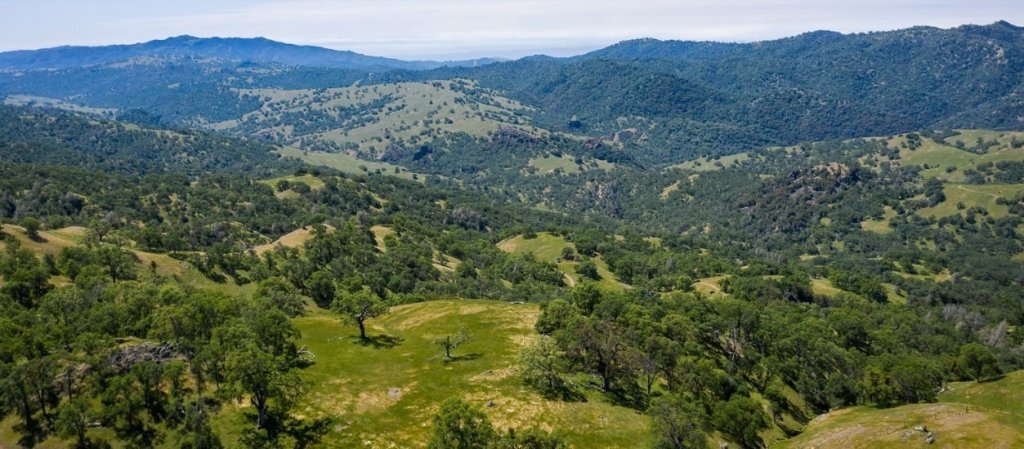A very rare “window of opportunity” for the Alameda County Water District to purchase more than 50,000 acres of privately held land in the hills east of the Bay Area to preserve water quality for millions of people appears to have closed, officials said this week.
Leaders of the district — which provides water to about 350,000 people in Fremont, Newark, and Union City — have for nearly two years been weighing making an offer to buy the N3 Cattle Co. ranch, much of which lies in watersheds that feed into critical creeks, reservoirs and lakes depended on for water supplies.
Officials have said if the district purchased the huge swath of land, it would help ensure water quality for generations to come in the Bay Area by preventing potential development on the land, which lies upstream of Lake Del Valle, Calaveras Reservoir, and parts of the greater Alameda Creek watershed.
But while the district’s board of directors discussed many times in closed session meetings since fall 2019 how or whether to buy the property — in what has been touted as the largest potential land sale in the state — someone else has apparently swooped in to scoop it up.
The website of California Outdoor Properties, a private brokerage firm managing the land sale, now says there is a “sale pending” on the property, which spans portions of Alameda, Santa Clara, San Joaquin, and Stanislaus counties.
The broker handling the sale, Todd Renfrew, said in a text message to this news organization Thursday evening that the property is “under contract,” though he declined to offer any other details.
In a public discussion about the property on Thursday evening, some of the water district’s board members lamented not acting sooner, instead choosing to possibly partner with other public agencies and nonprofits to go in on the property together.
“We had two of the environmental groups spearheading our coalition of partners, beginning early last year they said a deal is imminent, every single month they said it’s around the corner, it never was,” Boardmember Paul Sethy said at the meeting.
“And we never set a deadline for going to a plan B. So we were strung along, all year long and then into this year, biding our time, knowing full well that another offer could come in on the table,” Sethy continued.
“The window of opportunity closed on us, and an offer came in five weeks ago, and here we are in emergency mode trying to regain our interests,” Sethy said.
The district previously told this news organization the other agencies it was in talks with about the property included the San Francisco Public Utilities Commission, which owns the Calaveras Reservoir, the Nature Conservancy, The Trust for Public Land, and the East Bay Regional Park District.
Another boardmember, John Weed, indicated that state officials’ efforts to potentially create a state park on the property may have also added “political pressure” on board members trying to decide if they should pull the trigger at the time.
The board can still put in a “backup offer” on the property, for the current listing price of $68 million, which could be considered by the seller “should any current pending sale not be consummated,” Ed Stevenson, the district’s general manager told the board Thursday.
“A sale of a property like this, which would be very complex, it’s possible that it may not go through,” he said.
The property was originally listed at $72 million in summer 2019, the first time the property had been put up for sale in 85 years at the time.
During the discussion Thursday, four of the five boardmembers appeared to be in-favor of submitting a backup offer, largely citing the need to protect water quality.
Boardmember Judy Huang was opposed to the idea, saying the risk is too great, as the property could have areas such as former mining sites that may require costly cleanup efforts, and that the district’s customers shouldn’t bear the costs alone.
“(The district’s) customers should not be asked to carry the entire burden of financing this transaction and the associated risk and liabilities, when other local water agencies such as Zone 7, which supplies water to Dublin, San Ramon, Livermore, and Pleasanton, will also benefit,” she said.
Huang said the property likely wouldn’t increase water supply, and suggested the district could use the money to instead more aggressively pay down its pension and benefits liabilities, or accelerate the needed replacement of water mains.
District staff told the board if it were to go through with the purchase at $68 million, water rates would have to increase by about 5.2% to help finance the deal, though the rate increase could be spread out over several years.
The district has raised water rates nearly every year for more than two decades, including a 25 percent hike for 2017 and 2018.
A rough estimate pegged the costs for operating the ranch land at $3 million annually, but costs could be higher if the district or its partners tried to develop some of it as a public park, staff said.
Jonathan Wunderlich, the district’s finance manager, said there is “significant uncertainty” around how much financial assistance the district may get from other agencies also interested in preserving the property.
However, Boardmember Jim Gunther strongly feels “that other agencies would support us in our endeavor and we could get some financial assistance,” he said at the meeting.
“For the watershed and the environmental protection aspects of this, the project is worth it, and if (the district) has to take the lead, I’m willing to make that effort,” he said.
The board discussed the property in a closed session portion of the meeting. Afterwards, Board president Aziz Akbari said the “majority of the board” gave direction to staff regarding the property, but he didn’t elaborate on whether the direction was to put in an offer.










